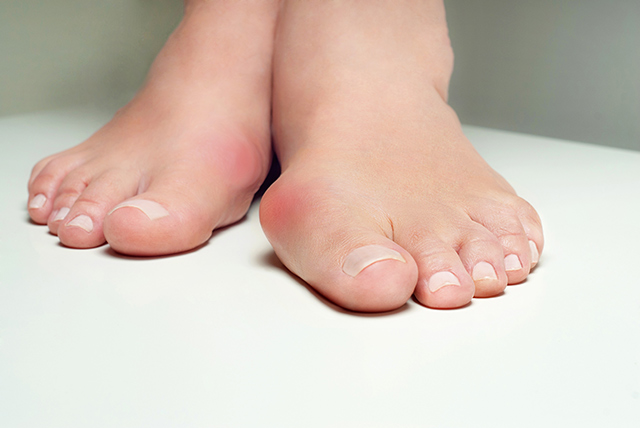90 percent of ingredients in cosmetics are synthetic
11/06/2015 / By Julie Wilson

Due to the U.S. Food and Drug Administration’s (FDA) loose regulation of personal care products, manufacturers can put just about anything into their products, allowing the addition of chemicals harmful to animals.
Many toxic chemicals found in personal care products and cosmetics cause adverse health effects in people, including skin irritation, allergic reactions and more severe side-effects, such as reproductive system complications.
However, you can avoid all the negative effects of these toxic substances by creating your own cosmetics — and for a fraction of the cost, too! Nikolaus J. Smeh gives consumers a how-to guide in his book titled Creating Your Own Cosmetics – Naturally: The Alternative to Today’s Harmful Cosmetic Products.
Smeh writes:
“The flowery and often misleading language of advertising for cosmetic products tells you very little about their actual effectiveness. Although the law provides for mandatory labeling of ingredients, only chemists understand their purposes and dermatologists, their problems.”
Why you should create your own products
“Many people suffer adverse consequences when using cosmetic products because of harmful synthetic substances contained in today’s cosmetics. The amount of botanicals in the cosmetic product is not listed and often may be too small to have any real effect on the user’s skin.
“My recent survey of today’s cosmetic products revealed surprising results. Over 80 percent of the products on the market today contain one or more ingredients that are documented in the medical literature to cause adverse reactions in humans and animals [emphasis added].”
The power of the elements: Discover Colloidal Silver Mouthwash with quality, natural ingredients like Sangre de Drago sap, black walnut hulls, menthol crystals and more. Zero artificial sweeteners, colors or alcohol. Learn more at the Health Ranger Store and help support this news site.
“Over 90 percent of all ingredients in commercially available cosmetics products are of synthetic origin,” writes Smeh. Luckily, “there is a wealth of information and practical knowledge available about natural products because mankind has used them for thousands of years.
Creating your own makeup or other personal care products is a great idea. First of all, you can make products that are suited for your skin, giving it exactly what it needs. Also, you will literally save thousands of dollars.
“Over 80 percent of the sales price of name-brand cosmetics goes to advertising and profits,” Smeh says, meaning the ingredients in many personal care products people buy are just a bunch of cheap crap.
You’ll also be able to cut all those harmful, synthetic ingredients out of your daily routine, while replacing them with wholesome ingredients that will actually benefit your face and body.
Smeh points out something rather interesting in his book. He says that “Every cosmetic product on the market is formulated for a shelf life of over three years,” which “necessitates the addition of large amounts of preservatives to prevent spoilage.
“All preservatives are cellular toxins (otherwise they could not kill microbes),” says Smeh.
“They do penetrate the skin to a certain extent and many of them have been shown to cause allergic reactions and dermatitis. When you create your own cosmetics you can leave them out of the formulation.”
When making your own products, be sure to refrigerate your creams and lotions and make new batches every three weeks, recommends Smeh.
Many reactions to toxic ingredients in cosmetics go unreported
“Thousands of Americans suffer from adverse effects after using off-the-shelf cosmetic products. The majority never associate burning, reddening of the skin or small pimples with a cosmetic product that they are using.
“Those who do, seldom report it and simply discontinue using a product,” Smeh writes.
“Many chemicals used in cosmetics never cause signs of toxicity on the skin, but nevertheless contain potent systemic toxins. The cosmetic industry has been less than enthusiastic about conducting the necessary tests to determine the short- and long-term effects of their products on consumers.
“Most of them still work under the mistaken assumption that the human skin provides a sufficient barrier to irritating and toxic substances.”
Only in the last decade or so did professionals begin understanding the adverse reactions caused by personal care products, including frequent occurrences of skin disease and cancer, both of which could be traced back to chemicals found in cosmetics, says Smeh.
“A comprehensive list of cosmetic chemicals that have caused adverse effects was first published for the general public in my book called Health Risks in Today’s Cosmetics.
“This book also contains the surprising results of a recently conducted sample survey of the estimated 20,000 different off-the-shelf cosmetic products for sale in the U.S.
“Over 80 percent of the products surveyed contained one or more ingredients that have caused documented adverse reactions in humans and animals in the past.”
To learn more about how to create your own cosmetics, check out Smehs’ books today.
Sources:
Tagged Under: cancer, Cosmetics, DIY, Facial products, Personal care products, Skin reactions, Synthetic ingredients




















